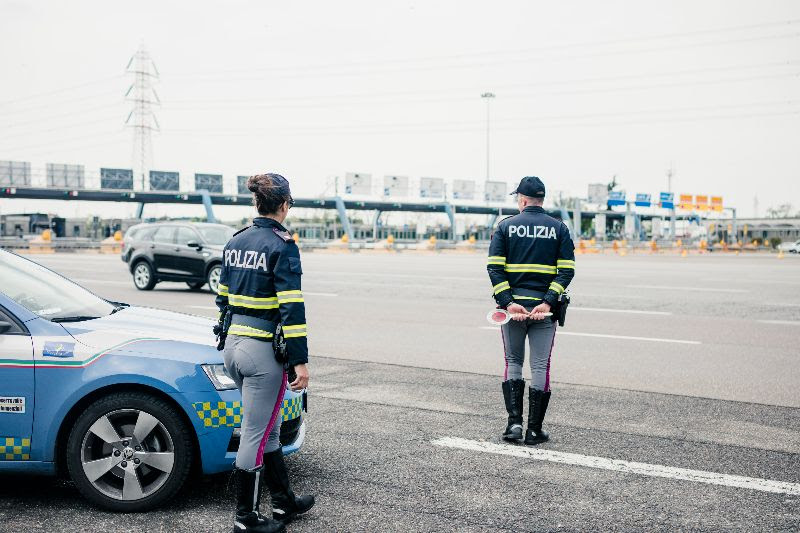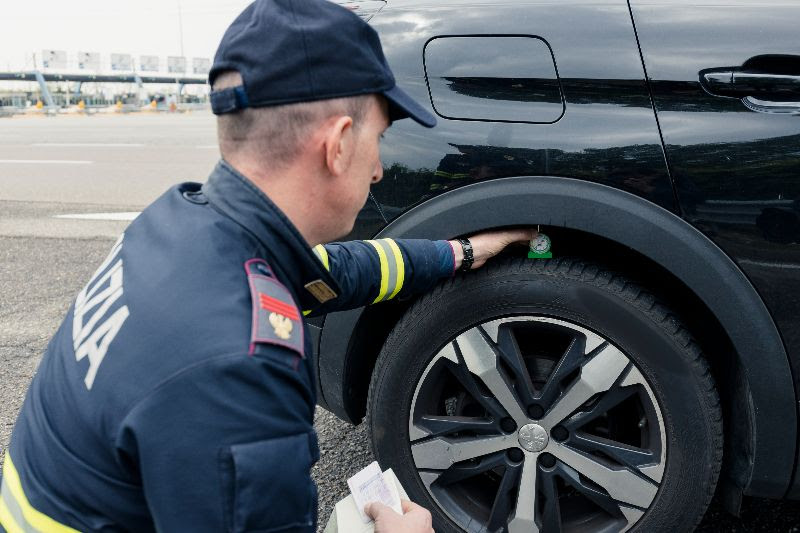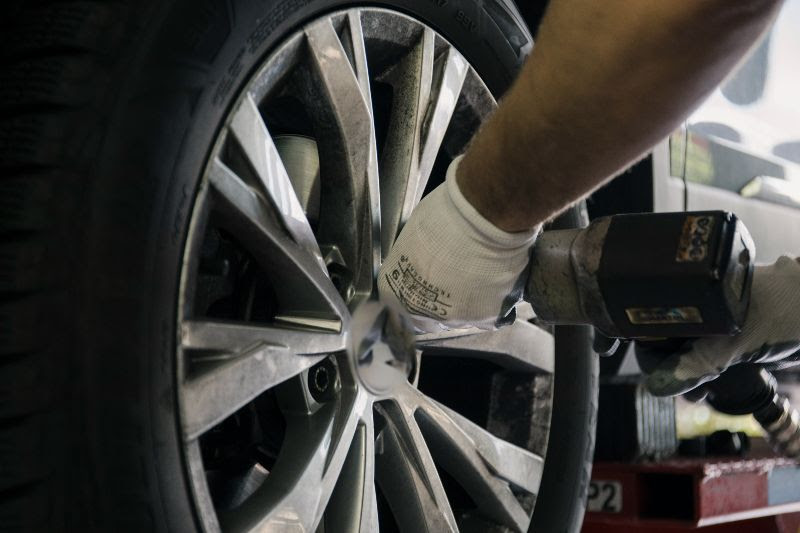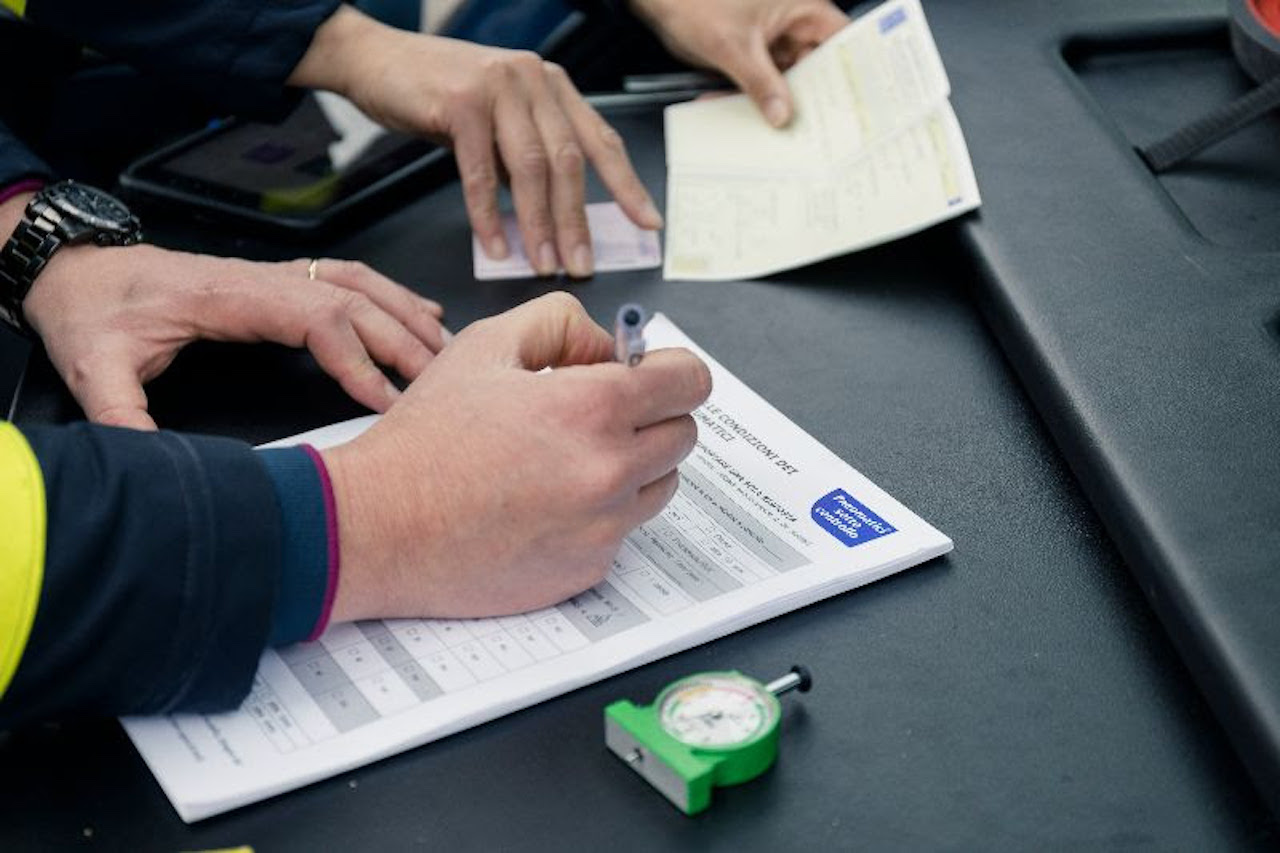The appointment is renewed with “Safe holidays” 2023 and under the lens there that’s 8 million vehicles with potentially dangerous tyres.
 “Safe holidays” 2023: 8 million vehicles with potentially dangerous tyres, press office source
“Safe holidays” 2023: 8 million vehicles with potentially dangerous tyres, press office source
The results of the Safe Holidays 2023 survey
The investigation Safe Holidays 2023 realized from the Police, Assogomma e Federpneus. I am 8,865 cars checkedin 6 regions in the period between maggio e June.
The compartments sampled in this edition are Piedmont, Valle d’Aosta, Veneto, Tuscany, Marche e Puglia.
The vehicle fleet in Italy
In Italy they result enrolled In the 2022 circa 53.7 million vehicles. Of these 40.2 million cars with an average age of 12 years and 6 months.
I am the 59% cars over 10 years old. Almost 10% of registered cars are over 30 years old. During 2022 there was a further aging of the vehicle fleet.
This in the 2021 stood at 12 years and 3 months. This is a figure that has been steadily worsening for many years (source Aci June 2023).
The analyzed sample
The sample investigated has a seniority equal to 8 years and 10 months. While the average of the Italian vehicle fleet is today 12 years and 6 months.
Quasi 4-year difference between the average age of vehicles circulating in Italy. And the sample investigated is many and should give rise to more comforting results.
Also the prevalence of controls on motorway traffic. Where the cars generally circulate in the best conditions, it should give rise to positive results.
Valle d’Aosta e Veneto are two regions among the top five in Italy with the youngest vehicle fleetwhile the region Marche is equipped with the park “greenest” car in Italy (source Aci 2023).
Unfortunately, the results that emerge from the annual survey do not go in this direction.
In these six regions with 37 provinces, over 12,539 million cars are in circulation, representing 31.2%* of the national total. The six regions under control are characterized by a high volume of traffic, both business and tourist.
The regions of the Safe Holidays 2023 survey had already been checked in the pre-covid years (2018-2019) and since then, millions of more vehicles have been circulating on our roads which are also much older.
Summing up
Cars less than 10 years of age experience tire problems to the extent of 1 in 5 cars. Those more than 10 years of age show an even more significant frequency: 1 in 3 cars have tire problems.
In the lasts over 100,000 vehicles throughout Italy were checked for ten years as part of the Safe Holidays project e, regardless of the region investigated, the results relating to tire non-conformities were always on average in line.
If we looked at the results of the sample on the Italian vehicle fleet, consisting of over 40 million cars, we could estimate at 8 million cars that are potentially dangerous because they have non-compliant tyres.
Smooth tyres
In the regions under investigation, the average level of smooth tires was 7% with significant variations between the best, the Marches (3.72% of the sample) and the worst, Puglia (10.70% of the sample).
If it is true that in the Apulian provinces particularly high percentages of smooth tires are reached on average, see for example Lecce with 23% of controlled cars and Foggia with 17%, it is equally true that in the province of Taranto the percentage drops drastically to less than ‘1%. This last figure contrasts with what was found in 2019 (13%) which, thanks to a control activity, had made it possible to discover an illegal trade in used winter tires. A clear example of how controls can be a deterrent to illegality.
 “Safe holidays” 2023: 8 million vehicles with potentially dangerous tyres, press office source
“Safe holidays” 2023: 8 million vehicles with potentially dangerous tyres, press office source
“Before embarking on a journey, it is also essential to check that the tires are in perfect working order” declares Filiberto Mastrapasqua, director of the Traffic Police Service. “Tyres are the vehicle’s only point of contact with the road and it is extremely important to check their wear, pressure and grip”.
“Driving with non-approved and/or damaged tyres, as well as being relevant from a sanctioning point of view, represents an act of irresponsibility because it exposes you to a high risk of incurring a road accident. Safety does not go on vacation, when you are driving, among the various precautions, we also pay attention to the tires, our safety and that of others depends on it”.
What is meant by non-homogeneous equipment
All those cars fitted with tires of different makes or models on the same axle or with two winter and two summer tyres, the so-called «mixed equipment». The first is an equipment prohibited by the Highway Codethe latter is explicitly discouraged by the Ministry of Infrastructure and Transport, as well as by tire manufacturers.
The non homogeneitywhich this year is on average al 7,65%, it is growing strongly compared to pre-covid values in the same regions. The values double and in some provinces triple.
This non-compliance represents a significant security risk. In other words: no one would walk in different shoes or with heels at different heights. In all these cases we are aware of running risks for our safety, the same also applies to uneven tyres.
Damage and non-approval
Damages e non approval they stand at percentages around 2% and al 3% respectively, without major fluctuations compared to previous years, indeed an improvement as regards homologation.
Dal 2012, i.e. for 11 years now, newly registered cars have had a device which warns us, through a light on the dashboardOf tire inflation problems. An aid to users that allows you to notify us to carry out a check with a specialist tire specialist and with this reducing the number of vehicles that have damage to the tires due to under-inflation.
If the percentage of non-approved tires is declining sharply, it is because the highway code was corrected way back in 2010 by banning not only the circulation but also the production, sale and possession of non-approved tires with heavy fines for violators.
Fabio Bertolotti, Director of Assogomma, comment: “One fact appears evident and has been a constant over the years and the data prove it: there is a direct correlation between the age of the vehicles and their maintenance conditions. The more the years go by, the more the tires become damaged or mismatched, while the percentage of slick tires is almost a constant, always very high, after the first 4 years of registration.
In Italy cars are not replaced so they age without due maintenance. It is clear that the incentives for the purchase of new cars have not made it possible to modernize the fleet in circulation and the economic difficulties facing the country do not favor the necessary maintenance with effects on safety and circulation on our roads.
Our institutions need to take note of it and act accordingly.
It is therefore essential to operate with forms of incentives for vehicle maintenance with particular regard to those devices that are particularly important for road safety, such as tyres”.
The data resulting from the survey, carried out on the by now consolidated model of the Polytechnic of Turin, show that even on a significantly younger sample than the national average of the fleet in circulation, there are important problems with the tyres.
Tires are a primary element of active safety. In fact, they can prevent road accidents provided they are fit for circulation, correctly inflated and in a perfect state of maintenance. They constitute the only point of contact between the vehicle and the ground, so it is essential that their original characteristics are maintained over time.
The advice is always to contact specialist tire specialists and have the condition of the shoes on your car checked free of charge, especially before leaving for the holidays. A kick to the tire is not enough, but the pressure determined by the vehicle manufacturer, indicated in the use and maintenance manual, must be respected. This will make it possible to optimize both the life of the tires and the consumption of the vehicle with sustainable behaviour, friendly to the environment. All the advice for correct maintenance and for getting to know your tires better can be downloaded from the website www.pneumaticisottocontrollato.it.
 “Safe holidays” 2023: 8 million vehicles with potentially dangerous tyres, press office source
“Safe holidays” 2023: 8 million vehicles with potentially dangerous tyres, press office source
Here’s how to travel safely, the tips
• Check the pressure and inflation regularly
A drop in pressure over time may be due to the natural diffusion of air through the tire itself, sudden changes in ambient temperature, small punctures. The check must be carried out when cold (max 2/3 km travelled) at least once a month and before long journeys.
In the case of “hot” testing (the tire heats up with use) it is normal to expect a pressure increase of up to 0.3 bar. Never deflate hot tyres.
Respect the values of…
















Leave a Reply
View Comments